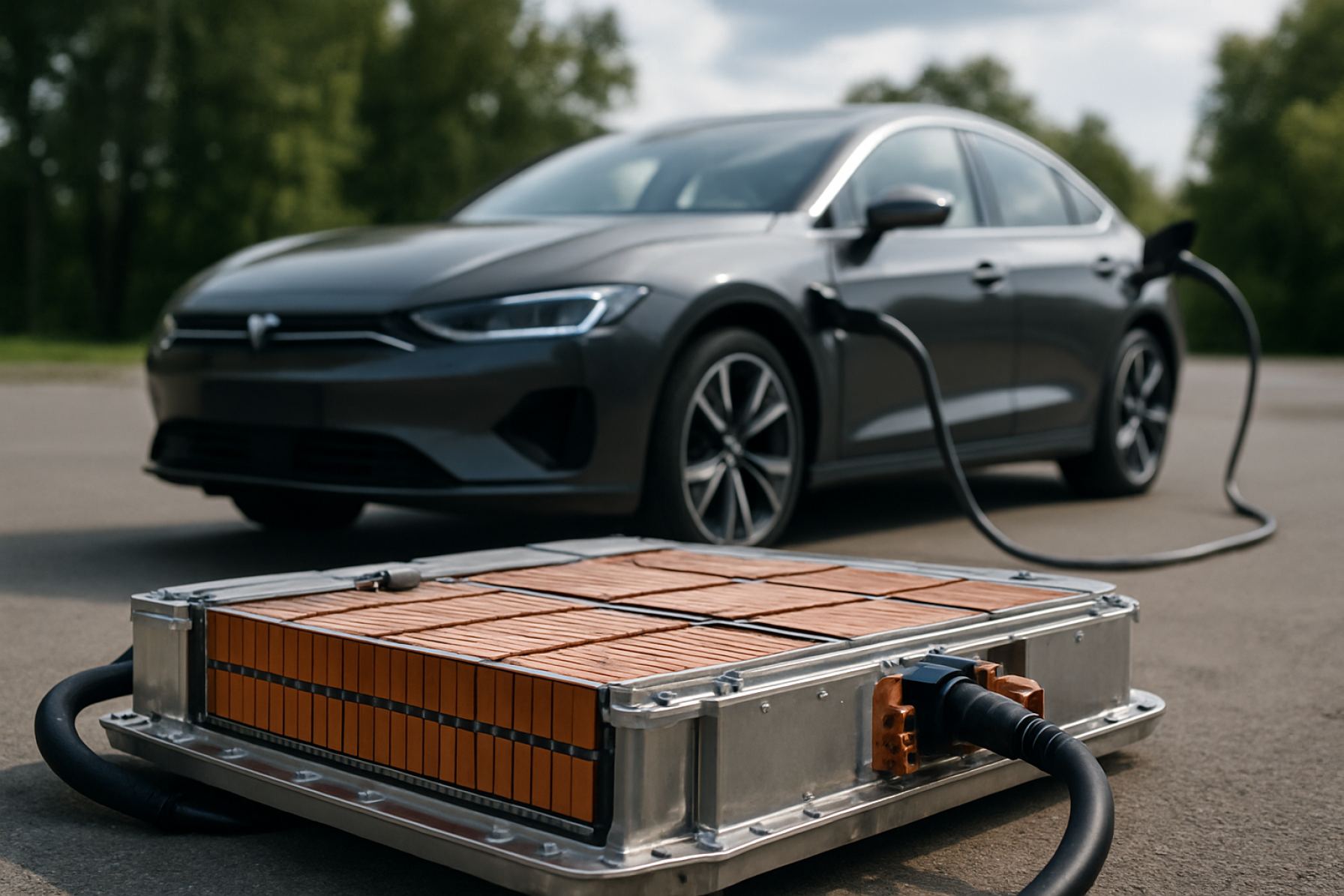Revolutionary AI Discovery Could Put Ultra-Safe, Long-Range EV Batteries on the Road by 2025
Discover how machine learning is accelerating the race for safer, longer-lasting solid-state batteries that could redefine electric vehicles.
- +50% EV Range: Solid-state batteries could boost electric vehicle range by half.
- Safer Storage: Solid-state tech slashes fire risks compared to conventional Li-ion batteries.
- 100x Faster: AI speeds up material discovery dramatically—orders of magnitude faster than traditional methods.
- 2025 Breakthrough: New materials may hit EVs and electronics as early as next year.
Electric vehicles (EVs) of the future might travel much farther on a single charge—and do so more safely—thanks to a game-changing approach led by researchers at Russia’s Skoltech and the AIRI Institute. By harnessing the power of advanced machine learning, scientists have supercharged the global hunt for new solid-state battery materials, overcoming barriers that have kept this technology just out of reach for major automakers.
Solid-state batteries represent the holy grail for the EV industry. Unlike today’s lithium-ion cells, which use flammable liquid electrolytes, solid-state designs swap in ceramics or other robust solid materials. That means not only up to 50% more driving range, but also remarkable fire resistance. But finding the right material mix—especially for the critical protective coatings inside these batteries—has proven notoriously complex.
Recent findings, published in npj Computational Materials and supported by the Russian Science Foundation, reveal machine learning methods can perform in days what might take human researchers years.
Tesla, Toyota, and top EV pioneers are now racing to bring solid-state cells to the mass market—even as these innovations promise to eclipse conventional battery tech in both safety and performance.
How Does Machine Learning Revolutionize Battery Breakthroughs?
Neural networks, especially those known as graph neural networks, sift through tens of thousands of potential material combinations at lightning speed. These AI engines can instantly predict which new compounds will move lithium ions efficiently and safely—crucial for powering batteries that last longer and charge faster.
In the Skoltech collaboration, machine learning spotlighted promising protective coating compounds such as Li3AlF6 and Li2ZnCl4. These coatings defend the battery’s vital electrolyte, preventing structural breakdown and deadly short circuits that currently plague some lithium-based systems.
Why Haven’t Solid-State Batteries Hit the Streets Yet?
Although solid-state batteries have dominated science headlines and inspired bold promises from automakers, real-world adoption remains just over the horizon. No currently available solid electrolyte checks every technical box, with issues ranging from stability to compatibility with existing battery architectures.
But with AI-driven material screening, that finish line is in sight. What used to take painstaking years can now be narrowed down to a shortlist of contenders in mere weeks—a leap that puts commercial-ready solid-state batteries within reach as soon as 2025.
Q&A: Your Biggest Solid-State Battery Questions—Answered
How much farther will electric vehicles go with solid-state batteries?
Expect up to 50% more range—imagine a 400-mile EV easily making it to 600 miles, shrinking charging stops.
Are solid-state batteries really safer?
Absolutely. By eliminating flammable liquid, these batteries practically erase the risk of thermal runaway fires.
What’s the role of protective coatings?
Specialized coatings act as shields inside the battery, preventing unwanted chemical reactions that can degrade performance or cause dangerous failures.
For more on battery innovation, check out ScienceDaily.
How to Accelerate the EV Revolution: What’s Next?
– AI-led discovery isn’t just academic. Automakers are already integrating machine learning into their battery R&D pipelines.
– The next frontier? Scaling up solid-state cells for mass production—making EVs cheaper, safer, and dramatically longer-range.
– New materials identified by Skoltech and AIRI may soon appear not just in cars, but also in advanced portable gadgets and even grid-level energy storage solutions.
Get ready for the EV revolution—new batteries are charging up for a 2025 breakout!
Future-Ready Checklist
- Stay tuned for updates from leading EV makers on solid-state integration.
- Watch for 2025 models boasting improved safety and range.
- Follow Skoltech and global research teams for the latest on AI and energy breakthroughs.
- Plan for a safer, more convenient, and eco-friendly electric future.
